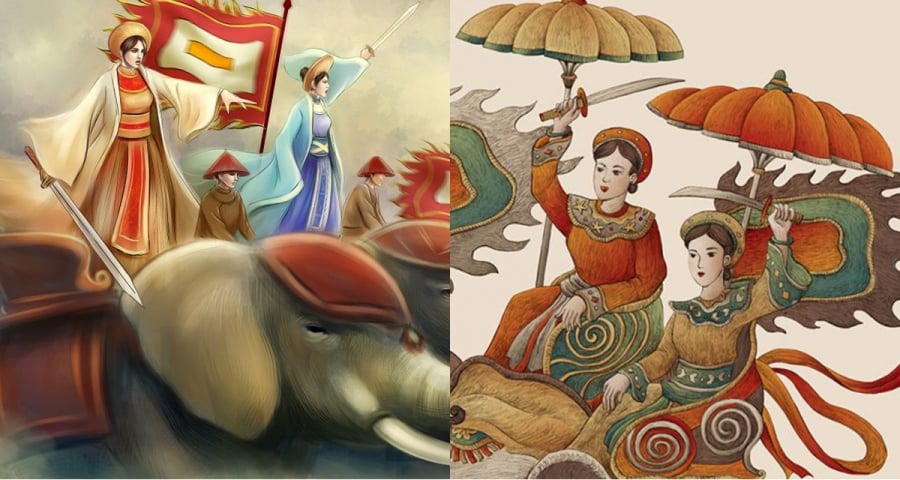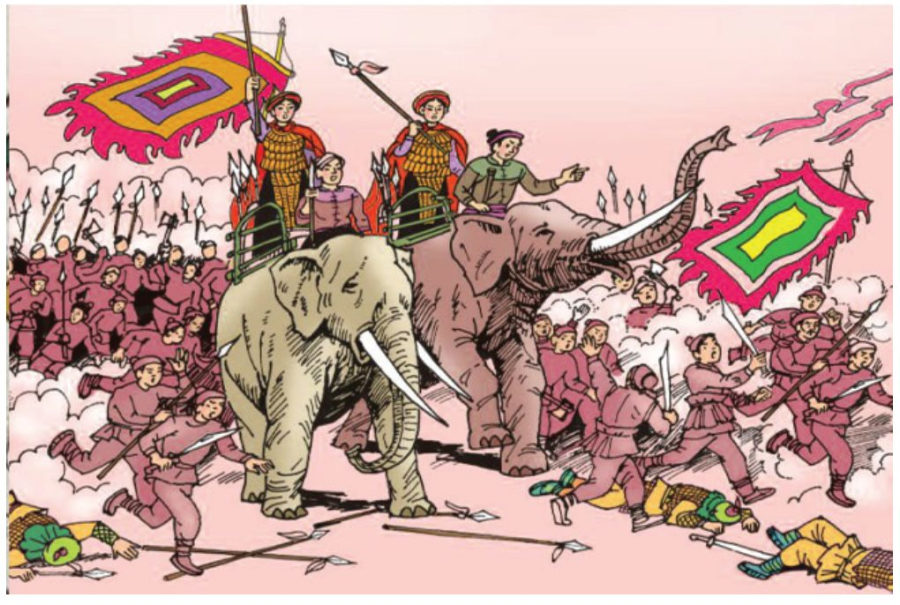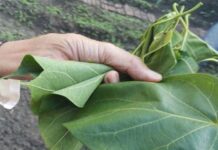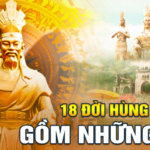The Trưng Sisters are familiar historical figures, but their lineage remains an enigma, with various opinions still divided on their origins.
What was the surname of the Trưng Sisters?
‘Đại Việt sử lược‘, considered Vietnam’s oldest historical record, mentions the Trưng Sisters’ background. According to this text, when Vietnam was still the Jiao Province, the sisters were twin sisters. They were born on the first day of the eighth lunar month in the year of Giáp Tuất, corresponding to the 14th year of the common era. The elder sister was named Trưng Trắc, and the younger, Trưng Nhị.
Their father passed away early, and the sisters were raised by their mother, Lady Man Thiện, a descendant of the Hùng Kings. The Trưng Sisters grew up to be well-versed in both literary and martial arts, empathetic towards the people, and possessed a strong will for insurrection.

They were the first female heroes of the Vietnamese nation, jointly leading an uprising against the Eastern Han dynasty and establishing a country with its capital in Mê Linh. After successfully expelling the foreign invaders, the elder sister, Trưng Trắc, proclaimed herself female king, known in history as Trưng Nữ Vương.
However, according to the ‘Đại Việt sử ký toàn thư‘, the Trưng Sisters were descendants of the Lạc generals in Mê Linh, so their surname was tentatively assumed to be Lạc. During the Văn Lang – Âu Lạc – Nam Việt period, the surnames of kings and nobles were often derived from the country’s name or the name of the ethnic group. Similarly, Hùng Vương was also recorded as Lạc Vương in history, and the Lạc lords and generals were all of the Lạc surname, originating from the name Lạc Việt.
The question of the Trưng Sisters’ surname has sparked intense public debate, with many experts arguing that Vietnam had not yet adopted surnames at the beginning of the common era. These scholars proposed the hypothesis that the Trưng Sisters did not have a specific surname.
According to Professor Phạm Quốc Sử, “In the 40th year of the first century, Vietnam had not yet adopted surnames, and children followed their mother’s lineage. We can only determine that the Trưng Sisters were related to the Hùng Kings through the maternal line.” At that time, Vietnam followed the Hùng Kings’ lineage, and the matriarchal system was still highly regarded, so children usually took their mother’s lineage, while the paternal lineage remained unclear. Therefore, it can be tentatively assumed that the Trưng Sisters bore the surname Hùng.

It can be tentatively assumed that the Trưng Sisters bore the surname Hùng.
Professor Sử also noted that “Trưng” was not their original name. The word “trưng” in Vietnamese originates from the word “trứng” (egg). Trưng Trắc and Trưng Nhị indicate the best and second-best eggs. According to the book ‘Famous Vietnamese Generals‘, the sisters’ original names were ‘Chắc’ and ‘Nhì’, which were transliterated into Chinese characters as Trưng Trắc and Trưng Nhị.
Meanwhile, Professor Nguyễn Khắc Thuần asserted that the Trưng Sisters did not have a surname at that time. Their mother’s name was believed to be Trần Thị Đoan, which was actually a name given by later generations in the 17th or 18th century. The name Man Thiện also meant “good Man people,” possibly a name given by the Han people. The sisters’ names were derived from Vietnam’s traditional silk weaving industry, similar to the way the Trần kings named themselves after different species of fish. In the past, when silkworms were raised, a good cocoon was called a “chắc” cocoon, and a less good cocoon was called a “nhì” cocoon; good moth eggs were called “chắc” eggs, and less good ones were called “nhì” eggs. Therefore, according to the book ‘Famous Vietnamese Generals‘, the sisters’ names were originally the simple “Chắc” and “Nhì,” transliterated into Chinese characters as Trưng Trắc and Trưng Nhị.


































